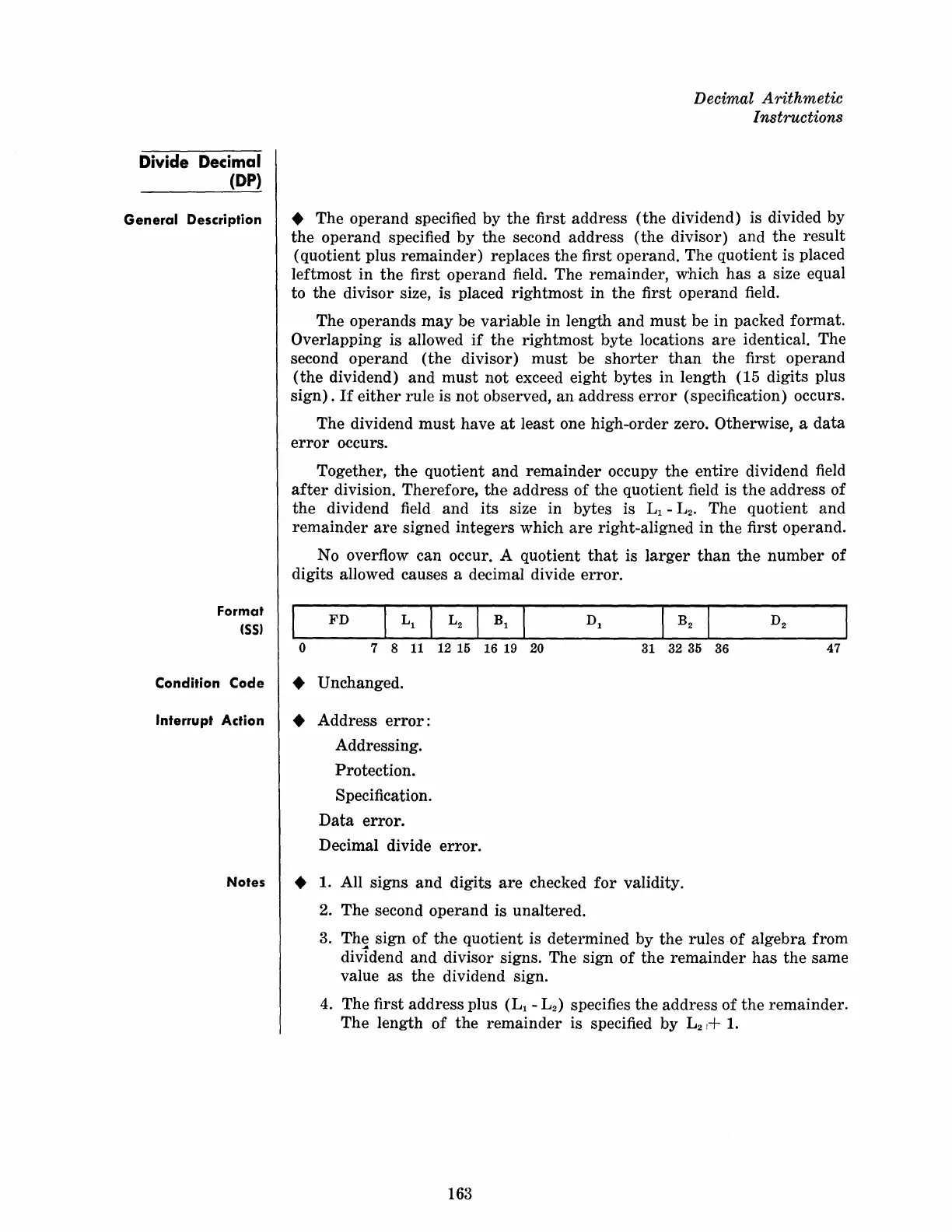Divide Decimal
CDP)
General Description
Format
(55)
Condition Code
Interrupt
Action
Notes
Decimal Arithmetic
Instructions
• The operand specified
by
the
first address
(the
dividend) is divided by
the
operand
specified by
the
second address
(the
divisor)
and
the
result
(quotient plus
remainder)
replaces
the
first operand. The quotient is placed
leftmost
in
the
first operand field. The remainder, which
has
a size equal
to
the
divisor size, is placed
rightmost
in
the
first operand field.
The operands
may
be variable in length
and
must
be
in
packed
format.
Overlapping is allowed
if
the
rightmost
byte locations
are
identical. The
second
operand
(the
divisor)
must
be
shorter
than
the
first
operand
(the
dividend)
and
must
not
exceed
eight
bytes in length (15 digits plus
sign).
If
either
rule is
not
observed,
an
address
error
(specification) occurs.
The dividend
must
have
at
least one high-order zero. Otherwise, a
data
error
occurs.
Together,
the
quotient
and
remainder
occupy
the
entire
dividend field
after
division. Therefore,
the
address
of
the
quotient field is
the
address of
the
dividend field
and
its size in bytes is Ll - L
2
•
The quotient
and
remainder
are
signed integers which
are
right-aligned in
the
first operand.
No overflow can occur. A quotient
that
is
larger
than
the
number
of
digits allowed causes a decimal divide
error.
0
•
•
•
FD
I
Ll
I
L2
I
Bl
I
Dl
B2
D2
7 8 11
12
15
16 19
20
31
32
35
36
47
Unchanged.
Address
error:
Addressing.
Protection.
Specification.
Data
error.
Decimal divide
error.
1. All
signs
and
digits
are
checked
for
validity .
2. The second
operand
is unaltered.
3.
Th~
sign
of
the
quotient is determined by
the
rules
of
algebra
from
dividend
and
divisor signs. The sign
of
the
remainder
has
the
same
value
as
the
dividend sign.
4.
The first address plus
(L
1
-
L
2
)
specifies
the
address
of
the
remainder.
The
length
of
the
remainder
is specified
by
L
2
!+
1.
163

